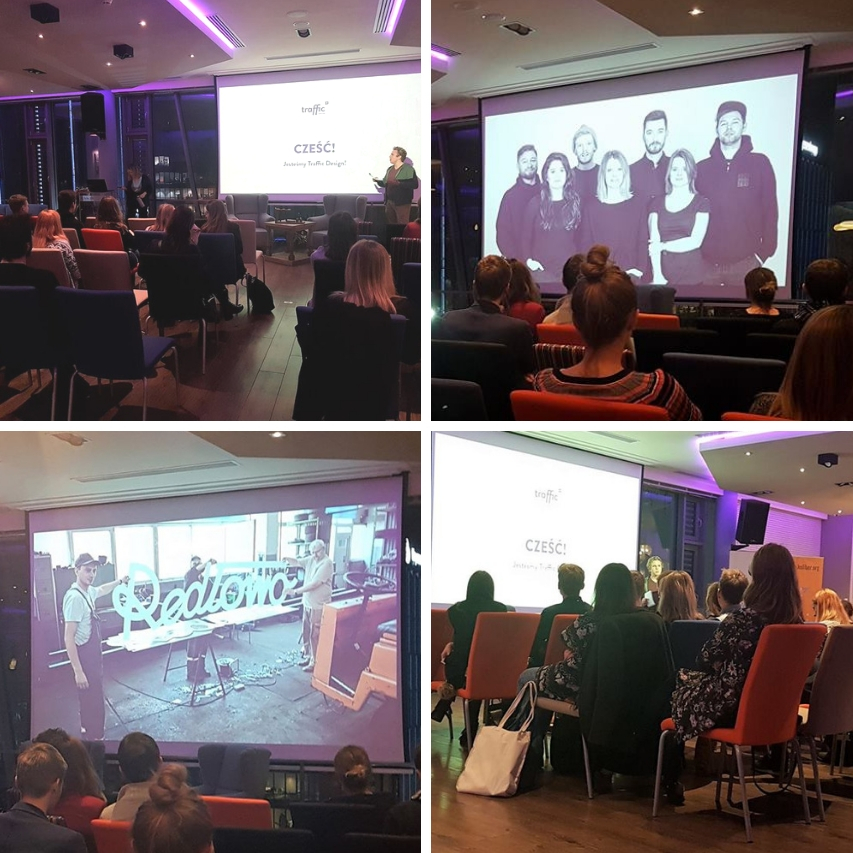Who wants visually friendly cities, how to control the chaos and whether the landscape act will actually become a remedy for poles covered with advertisements, unaesthetic billboards and skyscrapers with large-format advertisements – explains Monika Domańska from the Traffic Design Association, a participant of the debate “We want beautiful cities, or urban design in practice”, which took place in Olivia Business Centre. The meeting was organized by the Jagiellonian Club in Gdańsk.
Dagmara Rybicka: Isn’t the Tri-City aesthetically pleasing?
Monika Domańska: That’s a difficult question. Each agglomeration has its own individual character, while the aesthetics associated with the advertising industry applies to virtually the entire Polish. In the context of the landscape resolution, I have the impression that we are better off than other cities, which are still not in a hurry to adopt this document.
Shouldn’t we complain?
I don’t travel much in Poland, if so, it’s mainly between Warsaw and the Tri-City, so I don’t have a clear view of what’s going on in the country. Based on the opinions presented, I believe that there are many cities with aesthetics worse than the Tri-City.
Is there an alternative to large-format advertising?
Large-format advertising is usually a big cost for brands. It seems to me that these funds can be used in a more socially responsible way.
How?
By doing things that serve directly the residents, where branding is still present but less intrusive. It doesn’t matter if they are permanent or temporary installations in the form of benches, furniture and any kind of art. It’s important for brands to give something back to people in this space, not just solicit attention in a flashy way. In my opinion, ambient marketing is an excellent alternative.
What made you decide to change the Tri-City?
London inspirations (laughs). Living in the Shoreditch district, I had the opportunity to observe its transformation, the way in which space affects the vitality of the street. I’ve found that places are becoming popular because of the art. After returning from the master’s degree, together with Jacek, who already had experience in such projects, we set up the first version of Traffic Design in railway areas – stations and bridgeheads.
How did the idea catch on?
It seems to me that time is on our side. With some achievements under your belt, it is much easier to convince people of the purposefulness of such proposals. We have specific projects behind us, so we are not perceived as a group of haunted people. We present examples of signboards and it turns out that they can be implemented much easier than it seems. Brands around the world see the potential in cooperation with art and design, and this shows that the direction we have chosen is the right one. This is confirmed by social research conducted in Gdynia.
Were the conclusions surprising?
They confirmed the rightness of the actions. Society pays attention to the appearance of buildings. He looks at the exterior facades and shops covered with foil. He can give an example of what he doesn’t like. From the perspective of the street user, we get the most information about what needs to be changed.
Is your participation in the debate the voice of the Tri-City society?
I’m a sociologist by education and I want to be as close as possible to what a person who is not an architect or designer thinks about the city. That is why I am all the more eager to carry out projects within the Association. A big part of our activities is education, listening to expectations and creating projects tailored to the needs.
Can a city be nice after all?
I would like the debate to have firepower. However, I am aware that there are people in the process who are well-established. That is why I strongly focus on education and the media, thanks to which messages go beyond the closed environment. The power is when the owner of a smaller business, seeing such projects, decides to change the signboard, or when thinking about opening a store, asks a professional graphic designer for visual identification. This translates into many people and thanks to them we are approached by large agencies with a request to prepare a campaign, which includes, for example, signboards. Then the project goes to another level, the machine starts spinning.
A flagship example of change already exists in the Tri-City?
In Gdansk, it is certainly Stągiewna Street. Not in terms of aesthetics alone, but in terms of changing the development. The street has become a pedestrian zone and now looks completely different. Let’s remember that one thing is changes related to aesthetics, and the other is what we like to mention, which is a very friendly city. Stągiewna has been transformed for the benefit of residents and tourists. It was given to the people, and that’s what it’s all about.
Interviewed by: Dagmara Rybicka, Olivia Business Centre





